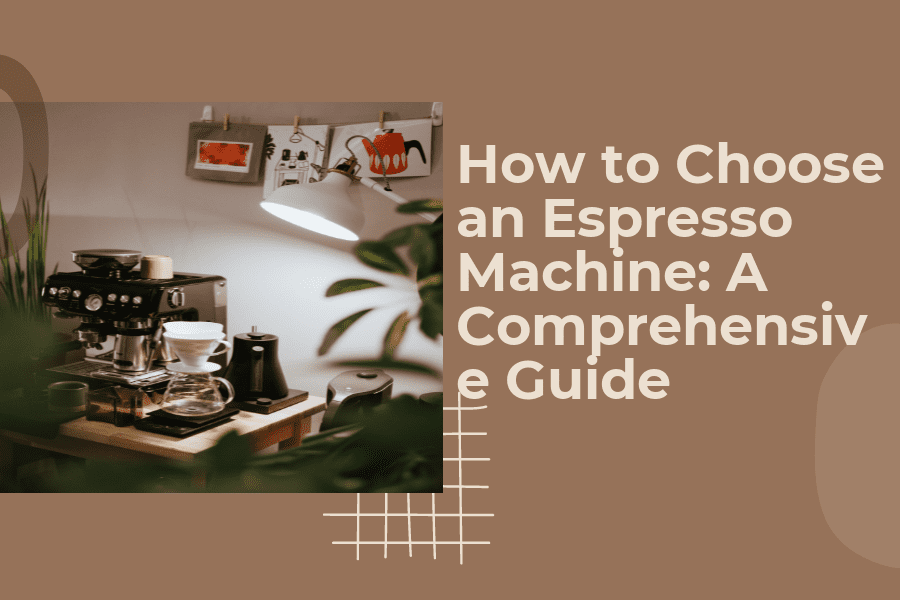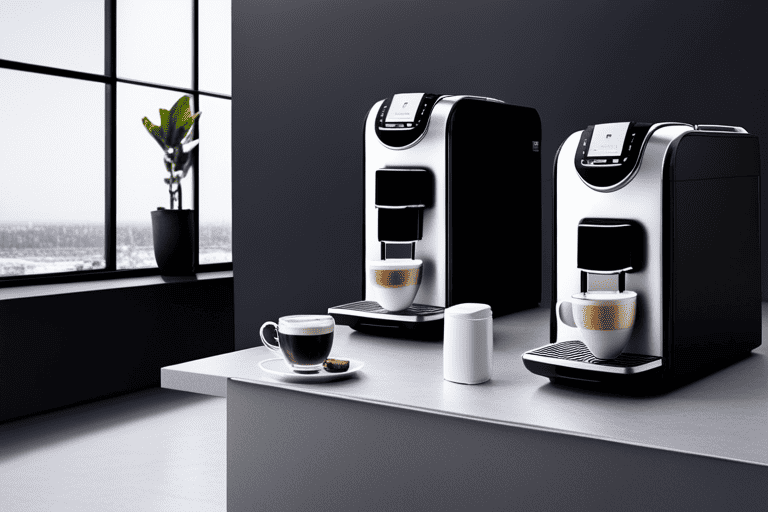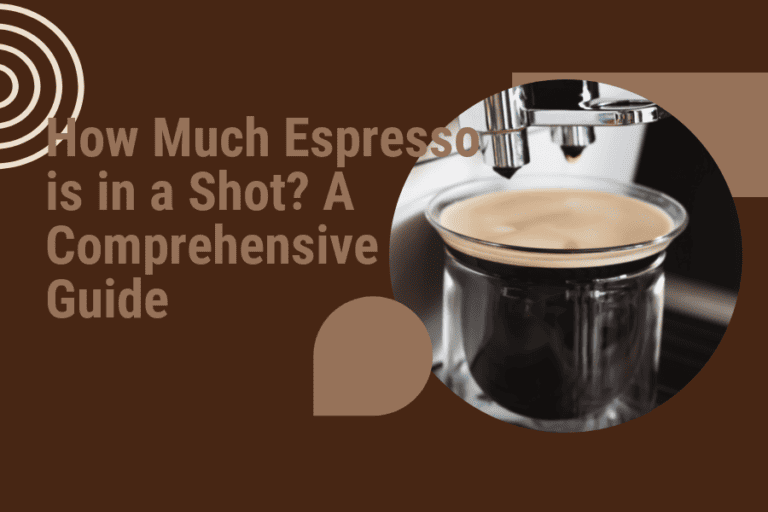How to Choose an Espresso Machine: A Comprehensive Guide

Choosing the perfect espresso machine for your home can be a daunting task, given the plethora of options available in today’s market. The quest for the perfect cup of espresso starts with understanding your specific needs, budget constraints, and the type of coffee drinks you plan to make. It’s essential to invest in a machine that caters to these factors, ensuring that you can enjoy barista-quality coffee right at home.
We firmly believe that knowledge is power, and knowing the key elements to consider while choosing an espresso machine is crucial. Some of these factors include the type of espresso drinks you desire, the frequency and quantity of drinks you consume, the kitchen space you have, and your grinder selection. Once you have clarity on these aspects, you’ll be much better equipped to pick a machine that meets your preferences and requirements.
In our quest to help you make an informed decision, we have gathered insights from various espresso machine guides and expert opinions. Armed with this information, we will guide you through the process of selecting the perfect espresso machine for your home, ensuring that you can revel in the delightful experience of brewing your own espresso, cappuccino, or latte.
Understanding Espresso Machines
Choosing the right espresso machine for your needs can be a daunting task, but understanding the differences between various types of machines is essential. In this section, we will briefly discuss four main types of espresso machines: Manual, Semi-Automatic, Fully Automatic, and Capsule.
Manual
Manual espresso machines, also known as lever machines, require the user to manually pump water through the coffee grounds. This offers a high level of control over the brewing process, which can lead to a satisfying and customized espresso experience. However, manual machines can be difficult to master and may not be the best choice for beginners.
Semi-Automatic
Semi-automatic espresso machines are a popular choice for home users, as they offer a balance between control and ease of use. Unlike manual machines, semi-automatic machines control the water flow, but still allow you to control the grind, dose, and tamp of the coffee grounds. This type of machine offers a good starting point for beginners while still providing room for growth and experimentation.
Fully Automatic
Fully automatic espresso machines take ease of use to the next level, by automating the entire brewing process, including grind, dose, tamp, and water flow. These machines are ideal for those who want a consistent shot of espresso without the need for manual adjustments. However, they can be less flexible and customizable compared to manual and semi-automatic machines.
Capsule
Capsule espresso machines use pre-packaged coffee capsules or pods, providing a simple and quick way to prepare espresso at home. These machines are designed for convenience and require minimal skill and effort to use. However, they can be less environmentally friendly due to the single-use nature of the capsules and may offer limited options when it comes to coffee bean selection and brewing customization.
Now that we have covered the four main types of espresso machines, you can make a more informed decision based on your preferences, skill level, and desired level of control over the brewing process.
Key Features to Consider
When choosing an espresso machine, it’s essential to consider certain features that will impact the quality of your coffee and the overall experience. In this section, we discuss the key aspects to look out for, including the grinder, temperature control, steam wand, portafilter, single or dual boiler, milk frother, and design.
Grinder
Having a good quality built-in grinder is crucial for making the perfect espresso. Grinding your coffee beans fresh before brewing will ensure optimal flavor and aroma. Some machines come with an integrated grinder, while others require an external grinder. Consider your preferences and budget when deciding on a grinder solution.
Temperature Control
Temperature control is essential for achieving a consistent and balanced extraction. Look for machines that offer user-adjustable temperature settings. It can also help maintain heat efficiently, especially for machines made of metal materials.
Steam Wand
A steam wand is responsible for creating microfoam for milk-based espresso drinks like cappuccinos and lattes. Make sure that the steam wand is easy to use and produces a sufficient amount of steam pressure for frothing milk.
Portafilter
The portafilter is the component that holds the coffee grounds during brewing. Choose a machine with a high-quality portafilter, typically made of brass or stainless steel. Some machines come with pressurized and non-pressurized filter baskets, which can enhance your brewing experience.
Single or Dual Boiler
Decide whether you want a single or dual boiler. A single boiler provides one source of heat for both brewing and steaming, while a dual boiler has separate heating elements. Dual boilers typically allow for more precise temperature control and faster brewing and steaming.
Milk Frother
If you enjoy milk-based espresso drinks, consider a machine with a built-in milk frother, such as one with automatic milk frothing options. This will simplify the process of creating the perfect milk foam for your cappuccinos and lattes.
Design
Lastly, consider the design of the espresso machine, including its size and the materials used. A well-crafted machine will not only be more durable but also fit seamlessly into your kitchen decor.
Budget and Price Range
When looking for an espresso machine, it’s essential to determine a budget and consider the price range of available models. As mentioned, espresso machines can vary significantly in cost, and many factors can influence the price, such as materials, features, and design.
There are some basic categories of prices to help narrow down your options:
- Entry-Level: Espresso machines in this category usually cost around $100 or less. These machines are designed for beginners or casual espresso drinkers and may not produce the same quality or consistency as higher-end models. However, they can still produce decent espresso shots and may come with some useful features.
- Mid-Range: These espresso machines typically range from $200 to $600. They come with a variety of features and offer a better overall espresso-making experience than entry-level models. Some affordable options in this range include those mentioned in this NBC News article.
- High-End: High-end espresso machines can cost $1,000 or more, and these appliances offer premium features, quality, and performance. A perfect example of the best espresso machine according toTom’s Guide is the Philips 3200 Series LatteGo.
Once we set our budget, it’s crucial to consider which features are most important and how much we are willing to pay for them. Remember, a higher price doesn’t always mean better quality. Sometimes, it may stem from additional features that may not be crucial for our specific needs.
Top Recommendations for Different Users
Choosing the perfect espresso machine can be quite a task as different users have different requirements and preferences. In this section, we will discuss our recommendations for various user categories. Let’s delve into the top options for beginners, advanced users, budget buyers, and those seeking commercial-grade machines.
Beginners
For those who are new to espresso making, it is essential to pick a user-friendly and easy-to-maintain machine. The Breville Bambino Plus is an excellent choice for beginners as it offers consistent espresso shots and silky frothed milk. Another beginner-friendly option is the Nespresso Vertuo Plus, which is a convenient and compact choice for hassle-free espresso-making.
Advanced Users
Advanced users who have mastered the art of espresso-making might be looking for more control and customization options. The Gaggia Classic Pro is a popular choice among coffee enthusiasts, allowing for precise temperature control and various brewing options. The Jura S8 Fully Automatic Espresso & Coffee Machine is another excellent choice for advanced users, providing a wide range of espresso and coffee specialties at the touch of a button.
Budget Buyers
For those on a tight budget who still want to enjoy quality espresso at home, consider the De’Longhi Stilosa Espresso Machine. This affordable option provides consistent espresso and steam for frothing milk, without breaking the bank. Another budget-friendly espresso machine is the Calphalon Temp IQ Espresso Machine, which includes a built-in grinder and temperature control for an all-in-one brewing experience.
Commercial Use
For those seeking a machine suitable for commercial use, it is important to prioritize durability, efficiency, and consistency. The La Marzocco Linea Mini is an industry favorite, offering the same powerful features found in their larger commercial machines but in a compact design suitable for small cafes or businesses. Another reliable commercial option is the Nuova Simonelli Appia II, which is well-regarded for its consistent espresso shots and powerful steam wand, ideal for heavy-duty use in a busy coffee shop setting.
Popular Espresso Machine Brands and Models
When it comes to choosing an espresso machine, it’s important to consider the reputation and quality of the brands available in the market. There are a few popular brands and models that consistently receive high ratings for their performance, design and overall user satisfaction.
One of the leading brands in the world of espresso machines is Breville. Breville has a range of machines to suit various needs and preferences, with one of their standout models being the Breville Bambino Plus. This espresso machine is highly regarded for its compact design, ease of use, and quality extraction that delivers a rich, delicious espresso.
Other notable brands include Nespresso, Cuisinart, De’Longhi, La Marzocca, and Jura. These companies offer machines that cater to different budgets and coffee-making experience levels. For example, the Jura S8 Fully Automatic Espresso & Coffee Machine is perfect for those looking for a high-quality latte machine, while the Rancilio Silvia M stands out for its durability and pro-grade features.
It’s essential to explore the diverse options available and understand the features and functionalities that best suit your needs. Here’s a brief comparison of some popular models from the mentioned brands:
| Image | Product | Features | Price |
|---|---|---|---|
 | Compact design Ease of use Quality extraction | Check Price | |
 | Single-serve, Versatile design Consistent taste | Check Price | |
 | Value for money Sleek design User-friendly | Check Price | |
 | Programmability Large reservoir Easy maintenance | Check Price | |
 | Fully-automatic High-quality Latte specialization | Check Price |
As you consider the available options, make sure to research the pros and cons of each brand and model, taking into account factors like budget, counter space, and personal preferences. This will help ensure you select the best espresso machine to meet your needs and enjoy countless delicious cups of coffee.
Factors to Keep in Mind
Countertop Space
When selecting an espresso machine, it’s important to consider the available countertop space in your kitchen. Espresso machines come in various sizes, and some can be quite large. Measure your kitchen counter and ensure there’s enough space for not only the machine itself but also additional room for cups, accessories, and a grinder if needed.
Intuitive Use
Using an espresso machine should be easy and enjoyable. We recommend looking for machines with intuitive interfaces and clear instructions. Some machines feature touch screen displays and customizable settings, making it simpler to achieve the perfect espresso. While semi-automatic machines offer more control over the brewing process, super-automatic machines require less expertise and can produce consistent results. If you’re a beginner, a super-automatic espresso machine might be a better fit.
Water Tank
The size of the water tank is another essential factor to keep in mind. Larger water tanks allow you to prepare more espresso shots in a row without refilling, which is especially helpful when entertaining guests. Keep in mind that some machines also have built-in water filtration systems to maintain the quality of your espresso. The water tank should be easy to access, remove, and fill, ensuring minimal downtime and maintenance.
Types of Beverages You Can Prepare
With a good espresso machine, you can easily prepare a wide variety of delicious beverages in the comfort of your home. Besides, the top-quality espresso adds the perfect flavor to your drinks. Here, we’ll briefly discuss some of the most popular types of drinks you can make using an espresso machine.
Espresso: The foundation of all espresso-based drinks, an espresso is a strong, concentrated coffee produced by forcing hot water through finely-ground coffee beans. The result is a rich and flavorful shot with a beautiful layer of crema on top.
Latte: A latte is made by combining espresso with steamed milk and topped with a small layer of foam. The milk to espresso ratio is typically around 2:1 or 3:1, producing a creamy and smooth beverage with a more subtle coffee flavor. Perfect for those who prefer their coffee drinks on the milder side. Whole Latte Love provides a comprehensive guide on making lattes using an espresso machine.
Cappuccino: Similar to a latte, a cappuccino consists of espresso, steamed milk, and frothed milk. However, the ratios are slightly different, with cappuccinos containing equal parts espresso, steamed milk, and foam, giving it a stronger coffee flavor than a latte. Compact Appliance shares more information on this popular beverage.
Americano: An Americano is made by adding hot water to a shot of espresso, resulting in a milder flavor while still retaining some of the espresso’s richness. This drink is perfect for those who enjoy the taste of espresso but find it too strong to enjoy on its own.
Mocha: A mocha is essentially a latte or cappuccino with chocolate added into the mix. The combination of espresso, milk, and chocolate creates a delicious, indulgent beverage that’s perfect for anyone with a sweet tooth. Espresso Gusto provides more insight into the different brews one can make.

Choosing the Right Grinder
One of the key factors in making a high-quality espresso is having a good grinder. In this section, we’ll discuss the importance of choosing the right grinder and some key aspects to consider when selecting one for your espresso machine.
A burr grinder is a popular and recommended option for achieving a consistent and finely ground coffee. These grinders use two revolving burrs that crush the coffee beans, resulting in a uniform grind. The consistency of the grind is essential for the extraction process, as uneven particles can cause an imbalanced extraction.
When considering a grinder, the first thing to look at is whether or not your espresso machine has a built-in grinder. Some machines come equipped with a grinder, which can be convenient and save counter space. However, if your machine does not have this feature or you’d like to have more control over the grinding process, investing in a separate burr grinder is recommended.
Something else to consider when choosing a grinder is the size of the burrs. Larger burrs generally produce a more consistent and finer ground coffee. Additionally, the motor power of the grinder can impact its overall performance. A more powerful motor can grind the beans more quickly and efficiently.
In summary:
- Opt for a burr grinder for consistent, finely ground coffee.
- Consider if your espresso machine has a built-in grinder or if you’ll need to purchase a separate one.
- Pay attention to the size of the burrs and the motor power for optimal grinding performance.
By selecting the right grinder for your espresso machine, you’ll be one step closer to enjoying the perfect cup of espresso.
Alternatives to Espresso Machines
If you’re looking for alternatives to traditional espresso machines, there are a couple of options available that are convenient and often more affordable. In this section, we’ll discuss stovetop espresso makers and coffee makers.
Stovetop Espresso Makers
Stovetop espresso makers, also known as moka pots, are a simple and cost-effective option for making espresso at home. They are a great alternative for those who want to avoid the complexity and cost of a manual espresso maker or one-touch machines. These non-electric devices work on most stovetops and are easy to use.
Simply add ground beans and water to the moka pot, place it on the stovetop, and heat until the water boils and creates pressure, forcing water through the coffee grounds and into the top chamber. While the end result is not the same as an espresso made with a dedicated machine, it still provides a rich, strong coffee that many people enjoy.
Coffee Makers
Coffee makers encompass a wide range of appliances, from simple drip coffee machines to more advanced single-serve pod systems. While these devices don’t produce traditional espresso, they do offer coffee lovers an alternative to investing in an entry-level espresso machine.
Drip coffee makers are a classic choice for brewing coffee at home. They are usually more affordable and straightforward to use compared to espresso machines, requiring only ground beans and water. Drip coffee makers often include additional features like programmable timers, allowing you to have fresh coffee ready when you wake up in the morning.
Single-serve pod systems, such as Keurig or Nespresso, are another popular alternative. These machines use pre-packaged coffee pods, providing a convenient option for those who want a quick and easy way to make coffee or espresso-like beverages. However, keep in mind that the cost of single-use pods can add up over time and may not be the most environmentally friendly option.
RECOMMENDED READS
Top Rated Espresso Machines: Your Guide to the Best Options
9 Bar Espresso Machine: The Key to Delicious, High-Quality Espresso
How to Make Espresso with Keurig: Tips and Tricks for a Perfect Brew





